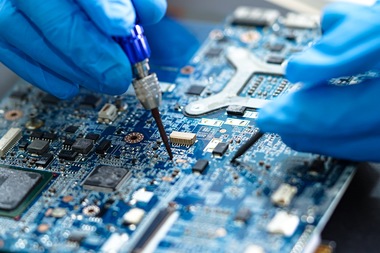☰ Menu
Menu

Few supply chain issues have been as disruptive as the significant circuit card shortage. Organizations across many industries have been forced to contend with an unprecedented printed circuit board (PCB) shortage since the outset of the pandemic.
These shortages have continued to impede business productivity and cause manufacturing delays. However, there are ways that your business can avoid exacerbating these challenges during the circuit card assembly processes. Your business should:
When designing a product, you should connect with your circuit card supplier in order to determine PCB availability. Your suppliers will be able to provide insights into which products are readily available and which are not. You can leverage this information to alter your design and minimize the risk of experiencing long-term manufacturing delays.
If you find that your design includes certain “must-have” components, consider placing a bulk order with your supplier. While this approach will require you to tie up a large amount of working capital, doing so can help you prevent supply chain issues.
The challenges of the last several years have demonstrated the need for supply chain flexibility. With that in mind, you should strive to expand your supplier network.
If all your PCBs originate from a single supplier, you are essentially building your supply chain on a house of cards. Should your sole supplier experience lasting disruptions, then your manufacturing operations will grind to a halt.
Conversely, if you have a diverse and agile supply chain, you will be better prepared to protect business continuity. You could turn to your complimentary supplier when your primary partner is unable to fulfill your PCB orders.
Having alternate supplies lined up and substituting scarce components for more readily available ones will go a long way in protecting business continuity. However, you will also need to provide your staff with access to technical courses in order to reap the benefits of the aforementioned tactics.
Well-trained personnel with relevant technical certifications can efficiently install chips, even when using non-standard products. They will also be better prepared to adapt when your design team has to make last-minute changes based on supply shortages.
Technical courses are far more cost-effective than you might expect. They are also an excellent investment that will help you avoid supply chain issues, improve staff morale, and maximize team productivity.
Cumulatively, the above strategies will allow your company to minimize production disruptions as you navigate the continuing supply chain challenges.